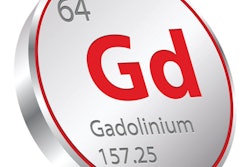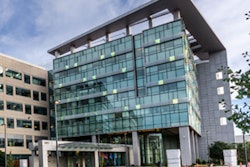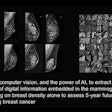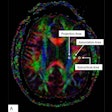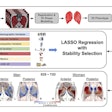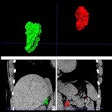Dear AuntMinnie Member,
Notifying women who have dense breast tissue about their status is proving to be more complicated than just dropping a letter in the mail and referring women for breast ultrasound scans -- a fact that's borne out by our top story for the past week.
The passage of density notification laws across the U.S. was initially seen as a public health victory for women. But now clinicians, women's health advocates, and public health experts are wrestling over how these women should be followed up after they've received their notification letters.
Now, a new study is questioning whether many women with dense breast tissue should even be notified. Worried about an increase in downstream testing, researchers believe that only notifying women who are at high risk of cancer would strike the best balance between the benefits of further workup and its "harms," such as anxiety and follow-up testing.
The debate is familiar to anyone who has followed the controversy over screening mammography. Many breast screening skeptics believe that focusing on high-risk women would make population-based screening more cost-effective while exposing fewer women to unnecessary workup and anxiety.
But the problem is that breast cancer also occurs in low-risk women -- quite a few of them, in fact. Restricting density notification to only a subset of women with dense breast tissue would condemn thousands to living in ignorance of their status, which is exactly what breast density notification is supposed to prevent.
In other news in women's imaging, researchers from Massachusetts developed a deep-learning model for predicting the five-year risk of women whose chances of developing cancer are higher. They suggest that the model could be a way to implement more personalized breast screening.
Get these stories and more in our Women's Imaging Community.
Acute GBCA reactions
When it comes to the use of gadolinium-based contrast agents (GBCAs) for MRI studies, most of the attention recently has been focused on gadolinium deposition -- when trace elements of gadolinium remain in patients long after their scans took place. But short-term acute reactions to GBCAs are also an issue.
Researchers from the Mayo Clinic in Rochester, MN, examined the factors that might lead to an acute reaction to gadolinium contrast, including the differences in reaction rates for specific GBCA products. You might be surprised at the factors that indicate a patient is more likely to experience a contrast reaction.
In other MRI news, researchers from Texas looked at ways to reduce unnecessary knee MRI scans, finding three elements that are most effective in reducing inappropriate imaging. Find out what worked in our MRI Community.
The cost of cancer
Finally, cancer takes a massive toll on the health and lives of those who are unlucky enough to be diagnosed with the disease. But a new study out this past week documents the economic cost of cancer, finding a price tag that's approaching $100 billion a year in the U.S. alone.




